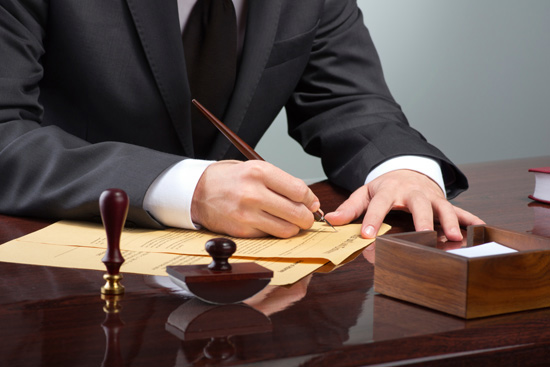Painting the exterior of your house is a significant investment in time, effort, and resources. It enhances the aesthetic appeal and protects your property from the harsh elements. If you’re considering painting your house in London, you must be well-prepared. Here are ten essential tips to guide you through the process.
1. Choosing the Optimal Painting Season
The timing of your painting project is crucial. The weather can be unpredictable in London, so choosing the right season is essential. The best time to paint house refurbishment london is during the late spring to early autumn when the weather is generally mild and dry. Avoid painting during rainy or highly humid days, as this can affect the paint’s adhesion and drying process. The optimal temperature range for exterior painting is between 10°C and 30°C. Ensuring that the weather will be stable for a few days post-painting is also vital to prevent any disruptions in the curing process.
2. Comprehensive Surface Preparation
One of the most critical steps in exterior painting is surface preparation. Properly preparing the surface ensures that the paint adheres well and lasts longer. Start by thoroughly cleaning the exterior walls to remove dirt, mould, and mildew. You can use a pressure washer for effective cleaning. After cleaning, inspect the walls for cracks, peeling paint, or damaged areas. Scrap any loose paint and sand the rough spots to create a smooth surface. Repair cracks or holes with a suitable filler and sand them down once dry. Ensuring a clean, soft, and dry surface is crucial for the best paint adhesion.
3. Select High-Quality Paint
Investing in high-quality paint is essential for achieving a long-lasting and professional-looking finish. High-quality paints offer better coverage, durability, and resistance to weather conditions. In London, where the weather can be pretty harsh, choosing a paint that can withstand moisture, UV rays, and temperature fluctuations is crucial. Look for paints specifically designed for exterior use and suitable for the material of your house (e.g., wood, brick, stucco). While premium paints might be more expensive upfront, they will save you money in the long run by reducing the need for frequent repainting.
4. Thoughtful Colour Selection
Choosing the right colour for your house exterior in london is not just about personal preference but also about complementing the surrounding environment and adhering to local regulations. In London, many neighbourhoods have specific colour schemes that must be followed to maintain a cohesive look. Consider the architectural style of your home, the colours of neighbouring houses, and the overall aesthetic you want to achieve. Light colours can make a house appear more prominent and are great for reflecting heat, while darker shades can give a more dramatic and sophisticated look. Before committing to the entire house, remember to test your chosen colours on a small area.
5. Using Appropriate Tools and Equipment
Using the right tools and equipment can significantly improve the quality and efficiency of your painting project. Invest in high-quality brushes, rollers, and sprayers suitable for exterior painting. Rollers and sprayers are ideal for even coverage on large surfaces, while brushes are perfect for detail work and edges. Extension poles, ladders, and scaffolding are essential for reaching high areas safely. Additionally, protective gear such as gloves, masks, and goggles is crucial to ensure your safety while working with paints and chemicals.
6. The Importance of Primer
Primer is vital in the painting process, especially for exterior surfaces. It creates a stable base for the paint, ensuring better adhesion and longevity. Primers are essential if you paint over bare wood, metal, or previously painted surfaces with significant wear. They help to seal the surface, hide imperfections, and provide a uniform base for the topcoat. In London, where moisture can be an issue, a high-quality primer can prevent issues like peeling and blistering. Choose a primer compatible with the surface material and the paint you intend to use.
7. Strategic Painting Techniques
Applying the paint correctly is as important as choosing the right paint and preparing the surface. Use long, smooth strokes to ensure even coverage and avoid drips. Start painting from the top and work your way down to prevent streaks or uneven patches. For best results, apply two coats of paint, allowing sufficient drying time between each coat. Pay special attention to edges, corners, and trim work, as these areas are often prone to paint peeling and damage. Using painter’s tape can help achieve clean lines and protect areas you don’t want to paint.
8. Monitoring Weather Conditions
Keeping an eye on the weather forecast is crucial when planning and executing an exterior painting project in London. Sudden weather changes can disrupt the painting process and affect the final result. Avoid painting on windy days as it can cause dust and debris to stick to the wet paint. Similarly, direct sunlight can cause the paint to dry too quickly, leading to an uneven finish. It’s best to start painting early in the morning or late in the afternoon when the sun is not too harsh. If the weather takes a turn for the worse, be prepared to pause the project and resume once conditions improve.
9. Adhering to Safety Standards
Safety should always be a top priority when undertaking any microcement london, especially exterior painting, which often involves working at heights. Ensure your ladders and scaffolding are stable and securely placed on a level surface. Always follow the manufacturer’s guidelines for safely using tools and equipment. Wear appropriate safety gear, including gloves, masks, and protective eyewear. If the painting project requires working above ground level, consider using a harness for added safety. If you’re uncomfortable with heights or the project’s scope, it’s wise to hire a professional painter with the necessary experience and equipment.
10. Ongoing Maintenance
Once your house is beautifully painted, it’s essential to maintain it to ensure the paint job’s longevity. Regular inspections can help identify any issues early on, such as peeling paint, mould, or mildew. Clean the exterior walls periodically to remove dirt and debris. Touch up any areas showing wear and tear to prevent further damage. In London’s climate, where moisture is expected, keeping gutters clean and ensuring proper drainage around the house can prevent water-related problems. Regular maintenance keeps your home looking fresh and protects the underlying structure.
Conclusion
Painting the exterior of your house in London requires careful planning, quality materials, and attention to detail. By following these ten essential tips, you can achieve a beautiful and durable finish that enhances your home’s curb appeal and protects it from the elements. Whether you’re a DIY enthusiast or prefer to hire a professional, understanding the critical aspects of exterior painting will help you make informed decisions and ensure a successful project. Remember, a well-executed paint job invests in your property’s longevity and value.
FAQ
What is the best time of year to paint the exterior of my house in London?
The best time to paint the exterior of your house in London is during the late spring to early autumn months when the weather is generally mild and dry. Ideally, you should aim for days with temperatures between 10°C and 30°C and avoid rainy or extremely humid days. This ensures that the paint adheres properly and dries evenly without being affected by moisture.
How important is surface preparation before painting, and what steps should I take?
Surface preparation is crucial for a successful exterior paint job. Properly preparing the surface ensures that the paint adheres well and lasts longer. Steps include cleaning the exterior walls thoroughly to remove dirt, mold, and mildew, scraping off any loose paint, sanding rough spots, and repairing any cracks or holes. Ensuring a clean, smooth, and dry surface is essential for optimal paint adhesion and durability.
How do I choose the right paint for my house’s exterior in London?
When selecting paint for your house’s exterior in London, choose high-quality paint specifically designed for exterior use. Consider the local climate, which includes moisture, UV rays, and temperature fluctuations. Look for paints that offer durability, weather resistance, and good coverage. While premium paints may be more expensive initially, they provide better protection and longevity, reducing the need for frequent repainting.
Why is using a primer important for exterior painting, and when should I use it?
Primer is essential for exterior painting as it creates a stable base for the paint, ensuring better adhesion and longevity. It helps to seal the surface, hide imperfections, and provide a uniform base for the topcoat. Using a primer is especially important when painting over bare wood, metal, or previously painted surfaces with significant wear. In London, where moisture can be an issue, a high-quality primer can prevent peeling and blistering of the paint.
What are some safety tips to follow when painting the exterior of my house?
Safety should be a top priority during exterior painting projects. Ensure ladders and scaffolding are stable and securely placed on a level surface. Follow the manufacturer’s guidelines for using tools and equipment. Wear appropriate safety gear, including gloves, masks, and protective eyewear. If working above ground level, consider using a harness for added safety. If you are uncomfortable with heights or the scope of the project, it’s advisable to hire a professional painter with the necessary experience and equipment.



